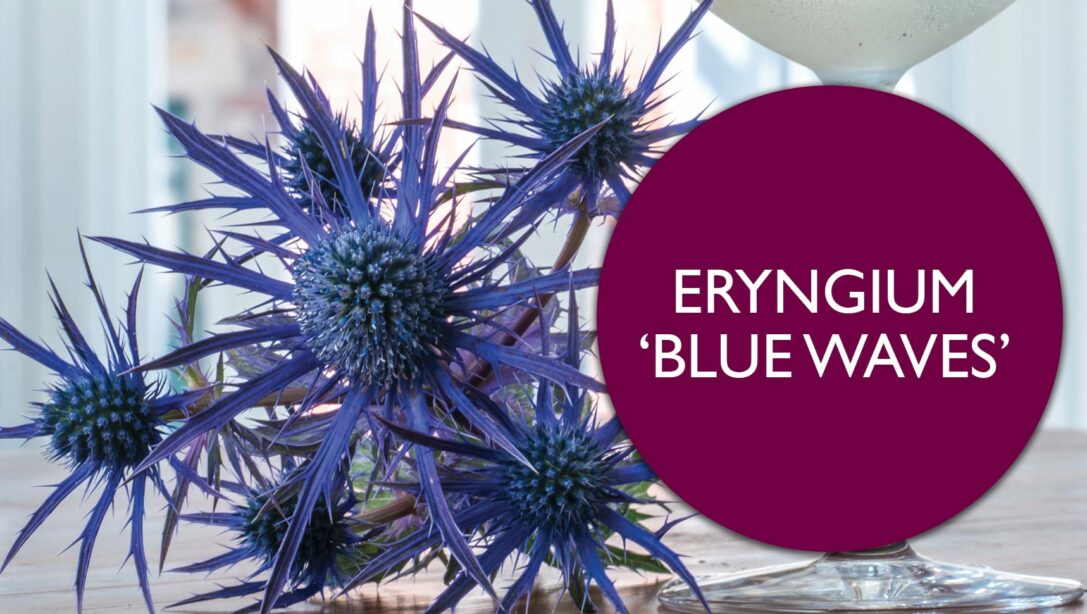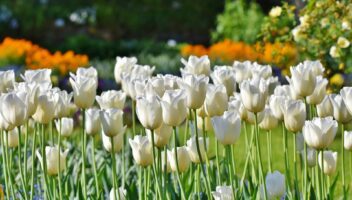With alluring flowers and fascinating foliage, it is no surprise that Eryngium is a popular choice for floral displays to add variety, height and stunning silhouettes.
A striking addition to any arrangement, these small thistle-like plants have eye-catching, distinctive ruff-like bracts, and are elegantly marbled with metallic, steely blue and silver tones. The jagged spikey bracts surround the flower, adding drama to the garden.
Origins
One of the best-known species of Eryngium is E.bourgatti, from the Pyrenees, which grows to heights of 45cm and is a deep lobed, silver veined variety.
Blue Waves at Chelsea
It is E. bourgatti that our new E. ‘Blue Waves’ variety derives. This new variety was launched at the 2018 RHS Chelsea Flower Show, and gained 2nd place in the esteemed RHS Chelsea Flower Show Plant of the Year, and will be loved by gardeners and pollinators alike.
Eryngium ‘Blue Waves’ is a hybrid; a blend of Eryngium bourgatii and Eryngium alpinum which was first cultivated in 2002 after two plants, growing close to each other, resulted in 11 hybrid seedlings. One of these was then selected due to its strong, upright stems and large bracted flower cones, surrounded by a number of successive flowers.
The intricate thistle-like blooms of the Eryngium are in a vibrant shade of amethyst and create a ‘blue wave’ sitting on top of the stout, inky blue stem. E. ‘Blue Waves’ emerges from an over-wintered crown producing ornate leaves with silver white veins, then in June the cone like heads appear, each surrounded by a prominent spiky bract on stems between 35cm and 50cm high. As the plant matures, the flower cones, bracts and stems all turn to the shade of vivid blue from which it takes its name.
Care Tips
Once established, the new hardy Eryngium is very drought tolerant, and even thrives in poor soil in full sun. It is low maintenance, very easy to grow and needs only poor to moderately fertile soil so is not too demanding! However, the soil does need to be well drained, particularly in winter. It is tolerant to dry conditions and likes warm to mild areas, with bright light so a position of full sun is required.
Companion planting
It is well suited to be planted with similarly sun-loving plants such as Verbena but avoid overcrowding by more vigorous neighbours to allow maximum sunlight.
Overwintering
We recommend leaving the remnant flowers and bracts in place to add some extra interest throughout winter and this will help to protect the crown of the plant from wet and cold.





